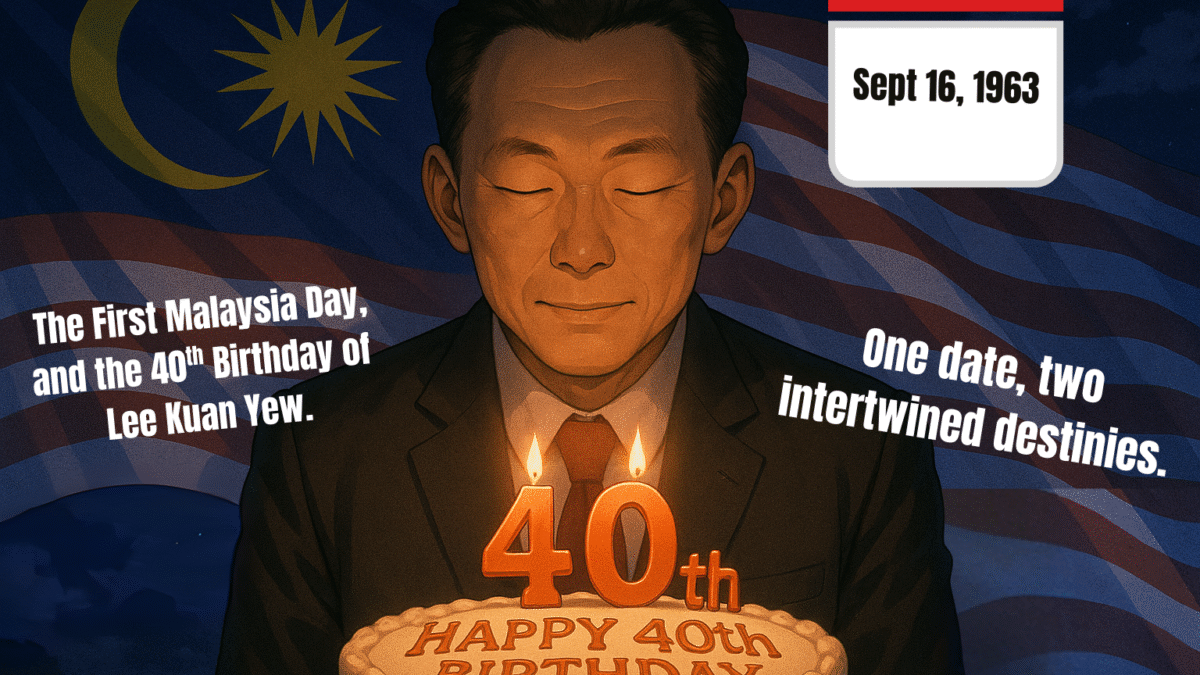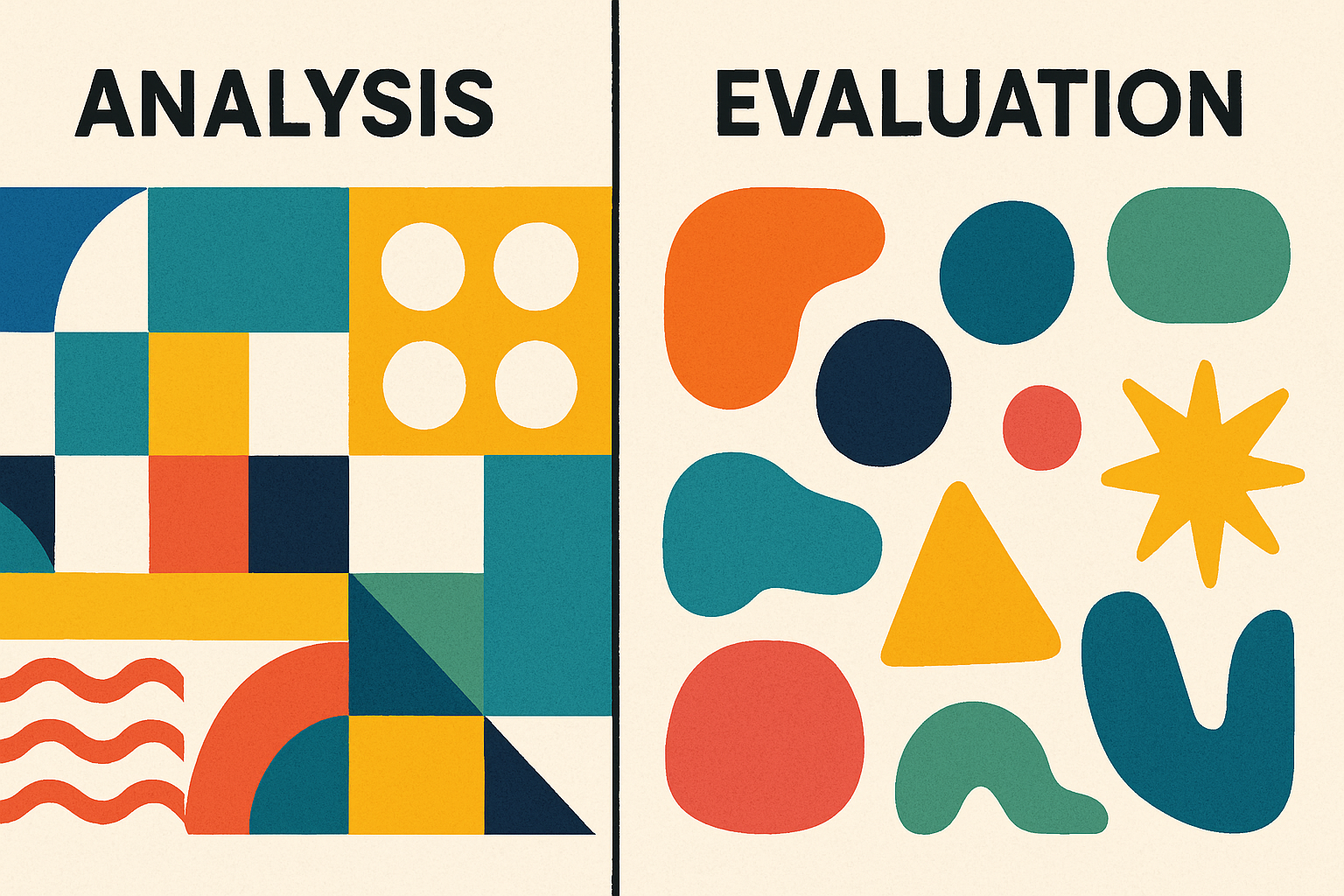Rafizi Ramli: Bearer of Reformasi, (ex)-Minister of Economy.

This is a website that is dedicated towards understanding economics and understanding the economy.
Yes, it is targeted towards students, but yes it is also relevant towards people of all ages as well and designed to be accessible whether you know about the full context of economics yet or not.
But there are things that are inherently interesting and that should not be dumbed down (also, young people can be much smarter than many old people!), and that deserve to be explored in an interesting and in-depth manner.
With that in mind… Those of you who are my Malaysian audience may know that in Malaysia we have a Ministry of Economy.
Yes, that’s right, a full-on ministry dedicated towards economic planning, which means economic planning.
Economic planning refers to the process by which a government sets out strategic goals and allocates resources to achieve national economic objectives over a specified period. Rather than letting markets operate entirely freely, the government plays an active role in:
- Directing investment
- Guiding industrial growth
- Reducing inequalities
- Improving infrastructure, education, and social services
As Minister of Economy, Rafizi Ramli was (wow, that’s weird to say) responsible for drawing up the Malaysia Plans, (frameworks for charting out the economy of Malaysia), setting a direction for Malaysia, and creating a whole range of different initiatives along the way.
But then, some time ago, Rafizi lost the PKR deputy president elections race… And is soon to be host of the Yang Berhenti Menteri podcast.

I’ve covered this pretty extensively on my YouTube channel, and you can look at all of that coverage here, there, and everywhere – Now, the man has said goodbye, but not before ensuring job security for the people in his office.

In this post, I’d like to do something a little bit different. I’d like to analyze Rafizi Ramli’s role as Minister of Economy (and therefore technically head of economic planning of Malaysia as a country) and go a little further and deeper into the dynamics of his relationship with his party.
It is a bit of a coincidence that I’m thinking about this and also making this site at the same time because I recently made a tweet that Rafizi actually responded to one of my tweets (yes, I do tweet! Follow me on Twitter at @victortanws!)

Aside from strange and funny pictures inspired by reading one too many manhwas (as you can see, lol), I thought it would be fun for those of you who are part of premium memberships to consider this little report about Rafizi Ramli.
If you prefer to purchase access to this piece individually, you may do so for USD10 over here instead – but if you are a part of Premium memberships, you should be able to access it immediately.
Even if you do not have access to Premium memberships, the piece should provide you some fun insights into his life and career that may help you understand his work a little more than you did before.
Rafizi Ramli: Bearer of Reformasi, (ex)-Minister of Economy
Historical Overview
Rafizi Ramli emerged during Malaysia’s late-1990s Reformasi movement, aligning early with Datuk Seri Anwar Ibrahim’s struggle against the Barisan Nasional government (therakyatpost.com)
As a student in the UK, Rafizi was active in protests supporting Anwar after the latter’s 1998 dismissal, marking him as a next-generation reformist
(therakyatpost.com).
He built a reputation as a whistleblower and strategist throughout the 2000s and 2010s – notably exposing the 2012 National Feedlot Corporation scandal involving a minister’s family, for which he was even charged under banking laws (a conviction later overturned in 2019)
In 2012, Rafizi founded the National Oversight and Whistleblowers (NOW) centre to encourage government accountability
(therakyatpost.com), cementing his image as a corruption-buster.
By the 2013 general election, PKR fielded him in Pandan, a Kuala Lumpur seat, where he won decisively, entering Parliament as one of the opposition’s rising stars.
Early on, Rafizi proved to be an innovative political strategist. In 2014 he engineered the “Kajang Move,” a bold (if controversial) plan to prompt a by-election in Kajang and install Anwar as Selangor’s Chief Minister – an operation that ultimately ousted the incumbent but resulted in Azmin Ali (then PKR Deputy President) taking the post instead. Following this, Rafizi’s standing in PKR grew: he was elected one of the party’s Vice-Presidents in 2014 and simultaneously appointed PKR Secretary-General, allowing him to shape party direction from within Anwar’s inner circle.
He spearheaded new campaign approaches, most famously by leveraging data analytics through an outfit called Invoke Malaysia, which he founded in 2016. Invoke became a cutting-edge political tool – it compiled voter data and employed big-data microtargeting to help the opposition in the 2018 elections
(malaymail.com).
With a team of software developers and data strategists, Invoke profiled millions of voters on issues and demographics, mirroring techniques from Obama’s and Modi’s campaigns(malaymail.com).
This effort was unprecedented in Malaysia; by early 2017 Invoke was working with dozens of opposition candidates in marginal seats to hone their outreach
(malaymail.com). Rafizi’s data-driven approach contributed to Pakatan Harapan’s historic 2018 victory, and he later noted that Invoke’s predictive models correctly foresaw that upset (cambridge.org). This cemented his image as a technocratic strategist who blends activism with analytics.
Despite these successes, Rafizi’s political journey has seen pauses and setbacks. In 2018, he chose not to contest the general election due to a pending court sentence (related to the NFC exposé) that raised questions about his eligibility
(en.wikipedia.org). Around the same time, he fought a bitter battle for PKR’s deputy presidency against Azmin Ali. That 2018 PKR leadership election ended in defeat for Rafizi, a blow that led him to temporarily retreat from frontline politics. During the tumultuous “Sheraton Move” of 2020 (when Azmin and others defected, collapsing the PH government), Rafizi remained on the sidelines, having announced a hiatus from politics. For about three years, he focused on private ventures and policy research, largely avoiding day-to-day party affairs.
Re-entry in 2022: Sensing the need to rejuvenate PKR’s reformist fervor, Rafizi made a high-profile comeback in March 2022, declaring he would contest for PKR Deputy President in the upcoming party polls. At that point, the deputy post was vacant (Azmin had been sacked in 2020), and many saw Rafizi as the ideal figure to rally the grassroots. Party leaders were split on his return – some welcomed the injection of energy, while others were wary of his uncompromising style.
Nonetheless, Rafizi campaigned on a platform of reviving “idealisme Reformasi” within PKR and decisively won the deputy presidency in May 2022, defeating Datuk Seri Saifuddin Nasution.
This victory re-established him as PKR’s No. 2 and heir-apparent to Anwar in the party hierarchy.
Shortly after, in the November 2022 15th General Election (GE15), Rafizi also returned to Parliament, recapturing his Pandan seat with a thumping 48,000-vote majority – a testament to his enduring electoral appeal. When GE15 produced a hung parliament, Rafizi was involved in the frantic coalition negotiations that followed. He had publicly advocated that Pakatan Harapan seek alliances either with Sabah/Sarawak parties or BN, whichever would deliver a stable majority
(malaymail.com). Eventually, PH formed a unity government with former rivals (Barisan Nasional and others), installing Anwar Ibrahim as Prime Minister in late 2022. Rafizi was appointed the Minister of Economy in Anwar’s Cabinet, a role befitting his technocratic strengths. In this capacity, he became responsible for economic planning, statistical agencies, and strategic initiatives – effectively the government’s policy wonk tasked with translating the reform agenda into concrete programs.
Policy Review
As Economy Minister and PKR deputy chief, Rafizi has helmed or shaped a slate of major policies in the Anwar administration. His agenda spans social subsidies, digital transformation, regional development, and industrial innovation. Below is an analysis of key initiatives associated with Rafizi, including their implementation status, public reception, impact, and alignment with Pakatan Harapan’s manifesto promises.
Targeted Subsidies and the PADU Database
One of Rafizi’s signature efforts is the move toward targeted subsidies – a shift from blanket subsidies (for fuel, electricity, etc.) to need-based aid. To enable this, Rafizi’s ministry developed PADU (Pangkalan Data Utama), a central socio-economic data hub. Launched on 2 January 2024 by PM Anwar
(theedgemalaysia.com), PADU compiles individual and household profiles from over 400 agencies as a “one-stop” database to identify aid recipients
(theedgemalaysia.com). Rafizi spearheaded this initiative, positioning PADU as the backbone for equitable subsidy reform.
Implementation Status: PADU was opened for public data verification in Q1 2024 and, according to Rafizi, became “ready… at any time” for the government to implement targeted subsidies (paultan.org). However, by mid-2024 the system was not yet fully utilised for fuel subsidy decisions, leading to public queries. (Rafizi revealed that PADU’s development cost exceeded RM85 million, prompting questions why the data wasn’t immediately used to determine RON95 petrol eligibility threads.net.) In May 2025, he disclosed that after trial runs and four cabinet discussions, the Finance Ministry would take over final decisions on RON95 subsidy rationalisation(thestar.com.my) – indicating that PADU’s data would feed into policy, but the politically sensitive rollout would be handled by the Finance Minister.
Public Reception: The PADU database drew mixed reactions. Many Malaysians were anxious about data privacy and the opt-in registration (indeed, as of early March 2024, only a few million households had verified their details, below the target)
(worldofbuzz.com). The government has repeatedly assured data security – Communications Minister Fahmi Fadzil even urged citizens to use PADU “without worries,” stressing existing laws protect the data
(theedgemalaysia.com). Economists and think-tanks generally laud the idea of a unified registry to cut subsidy leakages, but caution that low-income groups must not be left out due to tech barriers. Rafizi himself appealed to Malaysians to help “non-tech savvy” family and friends register on PADU so that no eligible household is overlooked
(worldofbuzz.com).
Economic Impact: The targeted subsidy reform is expected to significantly improve fiscal health if executed. Rafizi noted that channeling subsidies only to the truly needy would help Malaysia trim its budget deficit to ~3.0–3.5% of GDP by 2025
(theedgemalaysia.com). It would also correct inefficiencies where blanket fuel subsidies disproportionately benefited higher-income drivers
(theedgemalaysia.com). However, as implementation has been delayed, the impact is still prospective.
Alignment with PH Manifesto: Pakatan Harapan’s manifesto emphasized fiscal reform and equitable aid – moving away from blanket subsidies aligns with that pledge of “targeted assistance to those who need it most.” Rafizi’s PADU lays the groundwork for fulfilling this promise in a data-driven way. The challenge will be ensuring the transition (e.g. a tiered fuel pricing system) doesn’t spark public backlash. So far, Rafizi has handled the policy’s unpopular implications head-on – for instance, he proposed a two-tier petrol price where only the top 15% earners and foreigners pay market rates
(freemalaysiatoday.com). This technocratic candor, while risky politically, shows his commitment to the reform’s integrity.
“AI untuk Rakyat” and Digital Upskilling
To drive Malaysia’s digital economy, Rafizi introduced the “AI Untuk Rakyat” (AI for the People) program – a public artificial intelligence literacy campaign. Launched in January 2024 by Anwar and Rafizi
(malaymail.com), AI Untuk Rakyat is an online self-learning portal (at ai.gov.my) offering modules in Malay, English, Mandarin, and Tamil
(thestar.com.my).
Objective: close the digital literacy gap and demystify AI for ordinary Malaysians
(malaymail.com). Rafizi framed it as both an educational tool and an economic strategy: introducing AI concepts to students and workers so they can participate in future high-tech sectorsmalaymail.commalaymail.com.
Status: The portal is live, and the ministry set a target of 1 million Malaysians gaining basic AI skills within 3 years
(thestar.com.my).
In content, it is divided into interactive sections – “AI Aware” (covering use-cases and dispelling myths) and “AI Appreciate” (applications of AI across industries)malaymail.com.
Corporate partners like Intel Malaysia collaborated, with Intel’s MD calling AI “a critical driver of the economy” and supporting the program’s outreachmalaymail.com.
Reception: The initiative has been well-received as forward-looking, though the writer of this report thinks that the cost does not justify the benefit. Tech communities and educators however see it as a step toward building an AI-ready workforce.
Rafizi has explicitly tied it to bigger national ambitions – citing a report that AI could add US$113 billion (nearly 25% of GDP) to Malaysia’s economy
(thestar.com.my) if broadly adopted.
His vision is to make Malaysia an ASEAN AI hub, part of what he dubbed the “KL20 Blueprint” to rank Malaysia among the top 20 countries for nurturing start-ups
(thestar.com.my). This emphasis on emerging tech portrays Rafizi as a moderniser in government, keen on not just short-term fixes but long-term competitiveness. Impact: In the short term, AI Untuk Rakyat is building awareness (thousands have reportedly enrolled in its first months). Long term, if even a fraction of the targeted 1 million participants move into AI-related jobs or innovate in that space, it could help address the digital talent shortage. The program aligns with Malaysia’s broader digital economy blueprint (MyDIGITAL) goals of creating a tech-savvy workforce by 2030.
Alignment with Manifesto: PH’s manifesto advocated for the digital economy and IR4.0 initiatives. By providing free AI education, Rafizi’s program delivers on the promise to “equip Malaysians for the jobs of the future”. It’s also politically savvy – promoting technology in an inclusive way (“AI for the Rakyat”) helps counter fears that automation will only benefit elites. In Rafizi’s own words, the portal aims to “rid fears that AI will replace humans” by empowering people to understand and use it
(thestar.com.my).
Bumiputera Economic Transformation (PuTERA 35)
In August 2024, Rafizi unveiled PuTERA 35 – the Pelan Transformasi Ekonomi Bumiputera 2035, or Bumiputera Economic Transformation Plan to 2035. This comprehensive roadmap is Rafizi’s answer to longstanding affirmative action in a new, sustainable mold.
Policy Overview: PuTERA35 outlines three core pillars (aligned with Anwar’s “Malaysia MADANI” economic framework) to uplift the Bumiputera community (ethnic Malays and other indigenous groups) without sidelining other races
(malaymail.com). Rafizi acknowledged that poverty and wealth gaps remain disproportionately high among Bumiputeras, especially in Sabah, Sarawak, and Kelantan, as well as among Orang Asli communities
(malaymail.com). The plan’s goal is to produce Bumiputera who can compete domestically and globally, by focusing on talent development, higher-skilled workforce participation, income growth, equity ownership, and property ownership
(malaymail.com).
Key Targets: By 2035, the government wants Bumiputeras to hold 70% of high-skilled jobs and contribute 15% of GDP via Bumiputera-owned companies
(theedgemalaysia.com). It also aims to nurture a vibrant Bumiputera Commercial and Industrial Community (BCIC) – an aspiration dating back to the New Economic Policy that Rafizi noted is still unfulfilled
(malaymail.com). PuTERA35 plans to address hurdles like the community’s concentration in low-value-added work and over-reliance on government grants. For example, Rafizi pointed out that limited capital and support for start-ups have kept many Bumiputera enterprises from moving up the value chain
(malaymail.com), a gap this plan seeks to plug through better access to financing and mentorship.
Implementation: The plan was launched with much fanfare at the Putrajaya International Convention Centre (PICC)
(malaymail.com), and it dovetails with other national strategies (the MADANI Economy framework and the 12th Malaysia Plan adjustments). Rafizi positioned PuTERA35 as inclusive – explicitly assuring it “won’t compromise rights of other races”
(malaymail.com) – to preempt criticisms of nepotism or zero-sum outcomes. As of 2025, ministries and agencies are aligning their programs to PuTERA35’s pillars, and a council under the Economy Ministry monitors progress.
Reception: Within the Malay community, PuTERA35 has been welcomed as a necessary recalibration of pro-Bumiputera policies for the 21st century. Many Bumiputera NGOs and entrepreneurs appreciate that Rafizi’s plan emphasizes capacity-building over handouts, focusing on skills, startup support, and moving up the economic value chain
(malaymail.com). However, some Malay political rivals (e.g., Perikatan Nasional leaders) remain skeptical, either arguing it doesn’t go far enough or doubting PH’s commitment to Malay rights. Non-Bumiputera audiences have been cautiously supportive since Rafizi stressed the plan’s intent is to lift poor Bumiputeras without hurting other communities
(malaymail.com). So far, no major ethnic friction has arisen from PuTERA35, indicating Rafizi’s careful positioning paid off.
Impact: It’s too early to measure outcomes; 2035 is the horizon. But one immediate impact is signaling – it signaled to the Malay electorate that the unity government is serious about inclusive growth. This could shore up Malay support for PKR/PH if results (like higher Bumiputera incomes or business success stories) start appearing. Alignment with Manifesto: PH has always had to balance its multiracial platform with the reality of Bumiputera economic concerns. PuTERA35 aligns with PH’s manifesto promises of “reducing inequality” and creating a high-value economy for all, by tackling intra-Malay inequality in a reformist (less rent-seeking) way. It also complements Anwar’s narrative of “Malaysian Malaysia with Malay leadership” – proving that a reformist Malay leader can advance his community’s welfare in a fair, future-oriented manner. Rafizi, as a data-driven policymaker, brought a fresh take to a decades-old affirmative action discourse, emphasizing outcome-based metrics (skills, value-add) over quotas alone
(theedgemalaysia.com).
Johor–Singapore Special Economic Zone (JS-SEZ)
Rafizi has also played a strategic role in regional development initiatives, most notably the planned Johor–Singapore Special Economic Zone. This cross-border SEZ is an ambitious project modelled after China’s Shenzhen, aiming to synergize Johor’s land and labor with Singapore’s capital and technology.
Rafizi’s Role: As Economy Minister, Rafizi co-signed the Memorandum of Understanding with Singapore’s Trade Minister on 11 January 2024, formally proposing the JS-SEZ
(lexology.com). He represented Malaysia’s economic interests in negotiating this framework, which was agreed in principle by both governments. A year later, on 7 January 2025, Malaysia and Singapore inked a binding agreement to establish the SEZ (lexology.com) – a milestone reflecting Rafizi’s year-long diplomatic groundwork.
SEZ Details: The JS-SEZ will span about 3,500 sq km in Johor (an area five times the size of Singapore) covering nine designated zones from Johor Bahru city to industrial hubs like Pengerang. It targets core sectors such as manufacturing, digital economy, logistics, energy, education, and tourism across those zones. By integrating the two economies’ strengths, the SEZ hopes to attract global investments that neither could as effectively alone. Proposed initiatives include seamless customs clearance, joint investment incentives, and talent exchange programs.
Status: Following the agreement, task forces from both countries are ironing out implementation details – e.g. special immigration passes, infrastructure linking Iskandar Malaysia and Singapore, and regulatory alignment. Rafizi has actively engaged stakeholders like banks and investors; in May 2025 he hosted a “JS-SEZ Partners Dialogue” where six major banks committed to support financing within the zone
(thestar.com.my). The SEZ is expected to launch initial projects by late 2025 or 2026.
Public Reception: In Johor, the prospect of an economic boom has been welcomed – the state government (including MB Datuk Onn Hafiz) is supportive, seeing the SEZ as a catalyst for jobs and development. Singapore’s involvement lends credibility, though it also raised some nationalist eyebrows in Malaysia worried about sovereignty or one-sided benefits. Rafizi and Anwar have addressed this by emphasizing mutual gain: Johor will gain high-tech investments and better jobs, while Singapore can expand its economic footprint without land constraints. Thus far, reception is cautiously optimistic. Many recall that past Iskandar projects didn’t fully live up to hype; Rafizi’s challenge is to ensure JS-SEZ has tangible impact (e.g., new semiconductor fabs or R&D centers setting up in Johor within a few years).
Impact & Alignment: If successful, JS-SEZ will bolster PH’s manifesto goals of regional equalization and foreign investment. It aligns with the manifesto’s pledge to “spur economic growth corridors in every region”. It’s also a political win for Pakatan Harapan’s narrative of international cooperation – showcasing how Anwar’s government can work with Singapore (often portrayed as a competitor in the past) for mutual prosperity. Strategically, Rafizi’s involvement in JS-SEZ highlights his technocratic and internationalist bent, focusing on long-term structural growth (as opposed to parochial or short-term measures). It’s a bet that thoughtful economic integration can yield jobs and growth that voters will reward in the future.
Semiconductor Industry Push – Chip Design & ARM Deal
Perhaps the boldest of Rafizi’s initiatives is Malaysia’s leap into the semiconductor design arena. Traditionally strong in chip assembly and testing, Malaysia under Rafizi’s economic stewardship launched a plan to become an IC design and R&D hub – a major upshift in the value chain. The centrepiece of this plan is a partnership with Britain’s Arm Holdings (the SoftBank-owned chip design giant). Policy Details: In March 2025, Malaysia announced a “radical approach” deal with Arm worth US$250 million (RM1.1 billion) to acquire Arm’s advanced chip design blueprints and IP over 10 years
(malaymail.com)
(reuters.com). Rafizi negotiated this deal as a catalyst for a domestic chip design ecosystem. Essentially, Malaysia will license seven high-end Arm chip designs and receive technical support
(reuters.com), enabling local companies to develop “Made-in-Malaysia” semiconductors based on proven architectures. As part of the pact, Arm will open its first Southeast Asian office in Kuala Lumpur(reuters.com) and help train 10,000 Malaysian engineers in chip design and AI-related silicon over the next decade. Rafizi described this strategy as Malaysia “moving from the back-end to the front-end” of the semiconductor industry (malaymail.com) – no longer content with just packaging chips for others, but designing its own.
Status: The deal was signed and announced by PM Anwar and Arm’s CEO Rene Haas on 5 March 2025. Implementation has begun: a joint committee (Economy Ministry and Arm) is setting criteria to select local firms that will receive the design licenses and training, to ensure the IP is put to good use. Malaysia has also earmarked at least RM25 billion in public and private investment to support this semiconductor drive(malaymail.com) (e.g., through grants, setting up design incubators, and upgrading fabs). Rafizi is personally overseeing this multi-agency effort, given its importance to the MADANI Economy goal of becoming a technology producer.
Public and Industry Reception: The move grabbed headlines as an innovative attempt to vault Malaysia into the big leagues of chip design. Tech industry players have responded positively – seeing it as a way to leverage Malaysia’s existing semiconductor talent (from companies like Intel, Infineon, etc.) for higher-value work. Many noted it’s the first time a country is directly buying cutting-edge IP in this manner to jumpstart local firms
(reuters.com). Rafizi himself called it a “radical approach” aimed at building the whole ecosystem”
(malaymail.com), acknowledging the audacity. Domestically, most praised the ambition, though a few critics wondered if the hefty price tag will pay off. Rafizi addressed this by projecting the creation of 10 Malaysian chip design companies each with US$1.5–2 billion annual revenue within a decade. If achieved, that would contribute an extra 1% to GDP and firmly establish Malaysia as a global tech player.
Impact: It’s early days, but the announcement itself has placed Malaysia on the radar of high-tech investors. Microsoft, Google, Nvidia and others have recently poured billions into Malaysian data centres and AI R&D since 2023 (reuters.com), and the Arm deal complements this momentum by focusing on hardware innovation. Over the next 5–10 years, the expected impact is a new chip design industry employing thousands of engineers, creating homegrown IP, and reducing reliance on imported tech. Rafizi envisions Malaysia eventually exporting RM1.2 trillion worth of semiconductors by 2030 if all goes well
(malaymail.com) – an ambitious target that aligns with the country’s second “semiconductor wave” strategy
(straitstimes.com).
Alignment with Manifesto: PH’s manifesto didn’t explicitly mention semiconductors, but it did stress moving the economy up the value chain and embracing the digital/tech revolution. This initiative exemplifies that pledge. It also addresses strategic concerns: in an era of US-China tech rivalry and supply chain disruptions, having indigenous chip capability is a national asset(malaymail.com). By championing this, Rafizi has bolstered the government’s technocratic image. Internationally, it signals Malaysia’s intent to be a serious player in AI and chip tech (key for autonomy and high-income aspirations). Politically, though average voters may not feel the impact immediately, successful execution could translate into prestige and high-quality job creation, which is a win for the government’s narrative of “economic transformation” under PH. Notably, Rafizi’s handling of the media for this policy has been smoother than on consumer issues – he has passionately articulated the vision (in interviews with Bloomberg and others) rather than downplaying it.
Other Reforms: E-Invoicing and Subsidy Rationalisation
Beyond his flagship programs, Rafizi has lent support or strategic input to adjacent reforms in government finances and subsidies:
- E-Invoicing for Businesses: In 2023, Malaysia’s Inland Revenue Board (LHDN) began phasing in an electronic invoicing system – a digital reporting requirement for B2B invoices aimed at curbing tax evasion. While this falls under the Finance Ministry’s purview, Rafizi has been a proponent of digitising the economy’s “plumbing” to increase efficiency and revenue. He spoke at the National e-Invoicing forum alongside tax experts, highlighting that a universal e-invoice system will ensure transparency, faster payments, and reduce leakages in tax collection
(m.facebook.com)(instagram.com). Observers note that such digital tools complement Rafizi’s PADU approach – together forming a data-rich governance model. KPMG Malaysia estimated e-invoicing will significantly improve compliance and help the government address tax leakages, boosting coffers in line with Rafizi’s fiscal reform aims
(facebook.com)(malaymail.com). The system started with large taxpayers in 2024 and is slated to encompass all businesses by 2025m.facebook.com. This reform matches PH’s promise to increase revenue without raising tax rates, by plugging holes in the system. - Subsidy Rationalisation (beyond fuel): Rafizi has also been involved in rethinking other subsidies, such as electricity tariffs and welfare payouts, to ensure they are better targeted. For example, the government is studying a tiered electricity subsidy where heavy users (industry and high-income households) pay more, while ordinary folks continue getting discounts – an approach Rafizi’s ministry has analyzed using PADU data on household incomes. He has often been the face explaining why painful subsidy cuts are necessary for long-term economic health (theedgemalaysia.com).
- However, recognising the political volatility, either the government and cabinet decided or Rafizi chose to recently hand over some of these decisions to the Finance Ministry (as seen with fuel subsidies), a move interpreted as strategic compartmentalisation: let the Finance Minister (who is also the PM) bear the brunt of announcing subsidy cuts, insulating Rafizi somewhat from public anger.
Summary of Policy Agenda: Taken together, Rafizi’s policies portrayed a leader focused on structural reforms (targeted subsidies, Bumiputera empowerment via productivity, high-tech industry creation) and digital governance (AI literacy, data integration, e-invoicing). The implementation record is a mix – some initiatives are fully launched and making initial impact (AI program, PADU sign-ups, Arm deal signed), while others are in planning or pilot stages (targeted fuel subsidies pending, SEZ groundwork). Public reception has ranged from enthusiastic (tech and youth initiatives) to cautious or critical (cost of living suggestions, subsidy removals). Throughout, Rafizi has tried to align these moves with Pakatan Harapan’s manifesto – which emphasized reformasi economics: equitable, modern, corruption-free, and forward-looking.
Strategic Positioning and Personal Posture
Beyond formal policy, Rafizi Ramli’s strategic posture since 2022 reveals much about his political mindset. As a minister and deputy party president, he has had to navigate public expectations, internal pressures, and personal well-being. Key facets of his positioning include his communication style, handling of unpopular reforms, “technocrat” branding, and even deliberate withdrawal from constant connectivity – all of which reflect the strain of governance and political calculation.
But now, no longer a minister after his recent resignation, and after some hints that things were going wrong, things may change.
If you haven’t signed up yet, make sure to Join Now!





